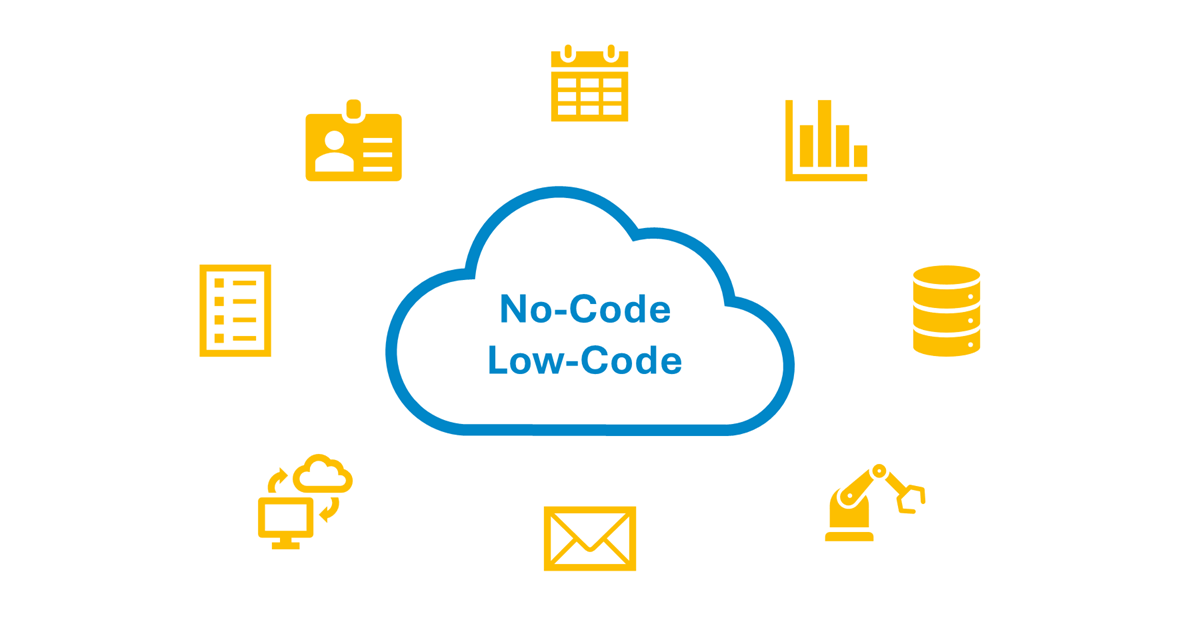Citizen development refers to the development of business applications by end users without programming knowledge – so-called citizen developers.
Citizen developers can come from a wide range of business areas and use their department-specific expertise to develop targeted solutions for everyday tasks and problems. To achive this, they use special development environments that require little or no programming knowledge – low-code platforms and no-code platforms.
You can read more about the differences between low-code platforms and no-code platforms here: Low-code vs. no-code – What’s the difference?
The citizen development approach is enjoying great popularity and the number of applications developed this way is increasing. More and more companies are relying on specialized platforms that replace code input with drag-and-drop tools to help digitalize and automate processes.
In this article, we use four use cases to show why no-code development by citizen developers is especially worthwhile in industrial production.

1. Simplified data integration and management
Tools for simple data integration are a core component of many no-code platforms. This makes sense, as comprehensive process optimization and automation is only possible if the corresponding systems and data sources are available.
In industrial production for example, machine data can be automatically recorded and written to databases. Data exchange with APIs or MQTT brokers also offers many possibilities, but obviously requires support for the corresponding interfaces.
Practical example: Our cloud-based no-code platform manubes relies on a simple system integration via standard industrial interfaces such as OPC UA, MQTT and REST. This way, production data from a wide variety of sources (machines, devices, databases, etc.) can be securely and easily transferred to the cloud. Here, it can not only be stored, but also structured in the form of data models – all without programming.
2. Creation of custom dashboards
By using ready-made drag-and-drop building blocks, citizen developers can quickly create customized dashboards. This allows production data and processes to be visualized in a variety of ways: Status displays, tables and gauge controls are just a few examples of common graphical elements used in industrial production.
With the right no-code platform, such dashboards can be created easily and offer great benefits in complex production environments. Malfunctions, deviations or quality problems can be detected in real time and offer the opportunity for quick reactions.
Practical example: The Page Designer of our no-code platform manubes offers the possibility to create such real-time visualizations using an intuitive drag-and-drop editor. In addition, you are able to add interactive elements such as forms or buttons which offer extensive possibilities for production control. manubes users with the appropriate permissions are given central access to production processes, systems and parameters and can make optimizations in real time.
3. Automating routine tasks
One of the most important benefits of citizen development is the ability to easily automate recurring and often time-consuming tasks. Most no-code platforms – including our cloud platform manubes – realize this with the help of workflows.
Many processes in industrial production can be automated this way. Examples include database operations and API queries, the recording and archiving of plant data and various tasks related to order processing and personnel management.
4. Automated notifications
In the previous section, we already touched on process automation with the help of workflows. These workflows often include automated notifications to various persons, departments, business partners or customers.
Such notifications are particularly important in industrial production. From long-term production planning to the delivery of finished goods: Production involves a wide variety of parties who want to be informed about certain progress and events. Some common use cases include the following:
- Real-time alerts in the event of failures or critical values
- Notifications regarding material requirements
- Instructions for employees
- Order status messages to customers
Conclusion
The use cases above show that industrial production management can benefit from citizen development in a variety of ways.
One major advantage of a no-code approach is that non-technical personnel can be involved in application development. This not only accelerates the digital transformation, but also allows practical experience to be incorporated into the applications developed. Citizen developers may be able to find creative solutions that would not have been identified in traditional software development.



Recent Comments